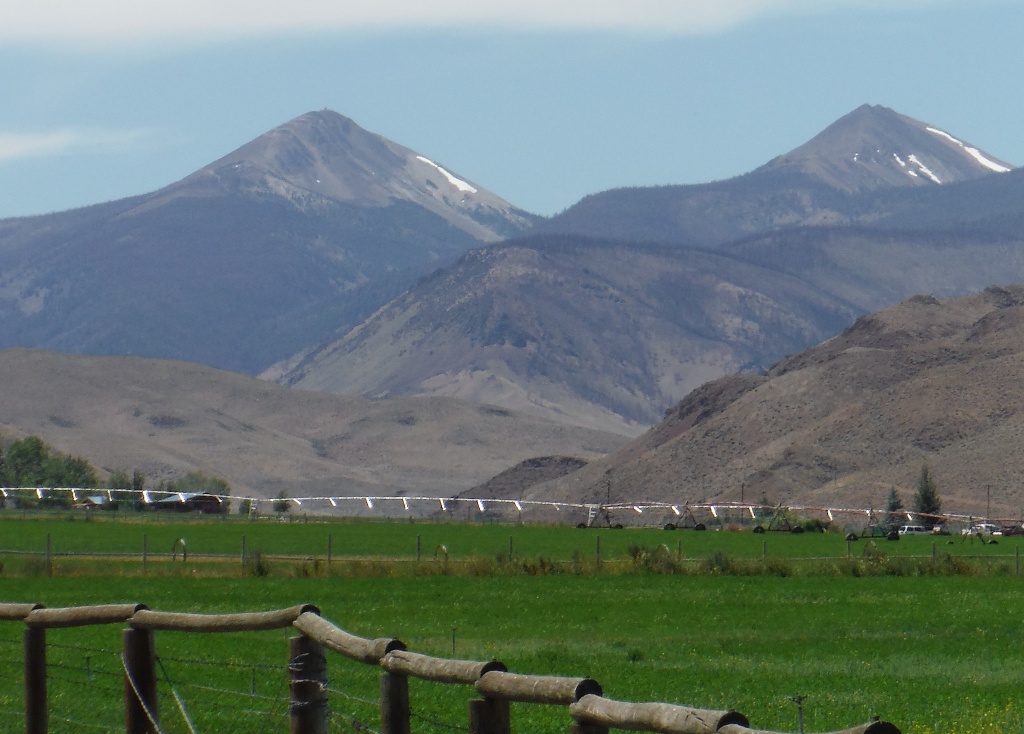 Lookout and operating site at
10,350' is on top of the left (south) peak as
viewed from Challis, ID Lookout and operating site at
10,350' is on top of the left (south) peak as
viewed from Challis, ID
|
W7GJ
6m DXpedition to DN24so
Custer County, Idaho
|
July 4, 2015
At 10,350' elevation,
Twin Peaks Lookout
in Custer
County, Idaho |
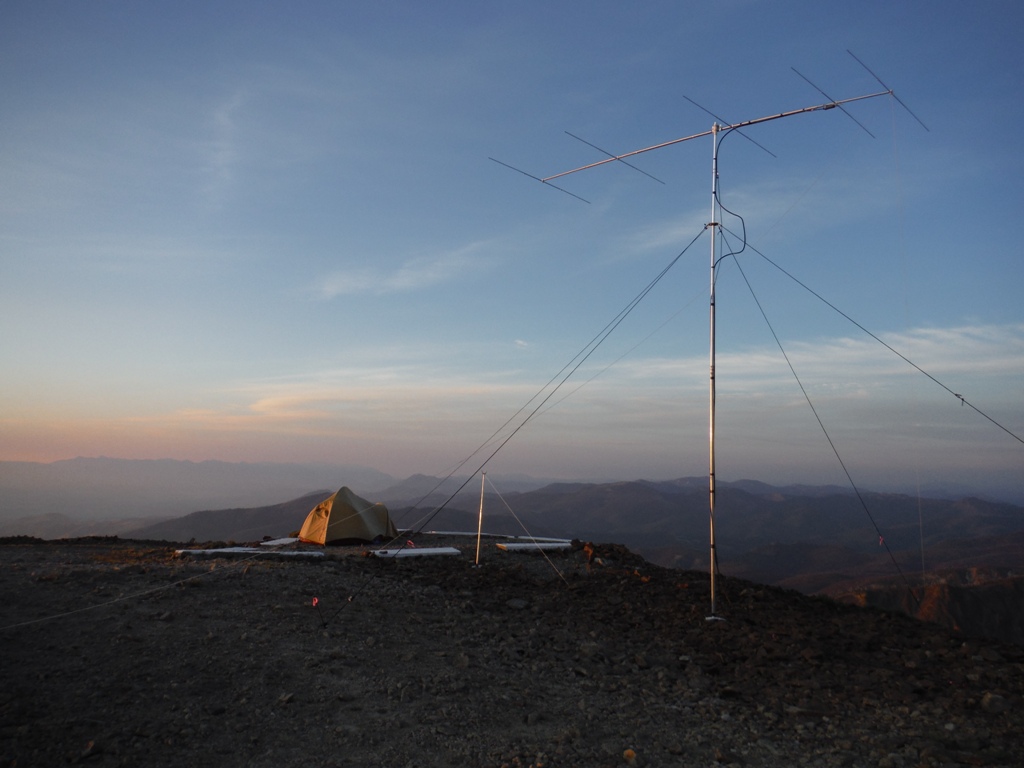 6M5XHG on 24' homebrew mast.
Antenna is rotated manually, and is aimed to
the east in this photo.
6M5XHG on 24' homebrew mast.
Antenna is rotated manually, and is aimed to
the east in this photo.
|
|
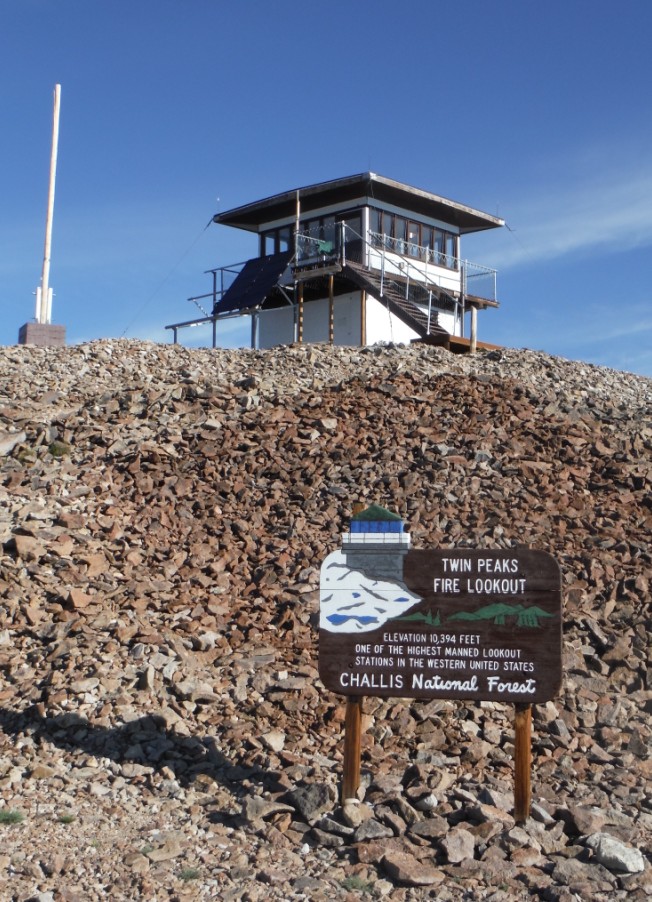 |
INTRODUCTION
After the very successful 6m DXpedition to
DN34gx, some requests came in to activate
DN24. Since it has been an extremely low
snow year, I called the Challis Ranger Station
on the off chance that the road to Twin Peaks
lookout might be open by July 4. I
had driven up to the 10,394' high lookout in
1990, but that was at the beginning of
September, and I remember hearing that it was
only accessible in August and until the first
snows blocked the road in early September.
However, to my surprise, I was informed
that the road was already open this summer due
to the unusually low snow pack! Quickly,
I made plans to head down to activate DN24so
from the lookout site atop the South Twin Peak
while the 6m Es season was still at its peak.
LOGISTICS
The Twin
Peaks Lookout site was chosen because it
is very high and affords a great shot in
all directions. There also is an
outhouse up at the summit, which is very
convenient for a two night camping
operation up there. We set up just
below the lookout where the road ended,
and were only blocked to the northwest.
|
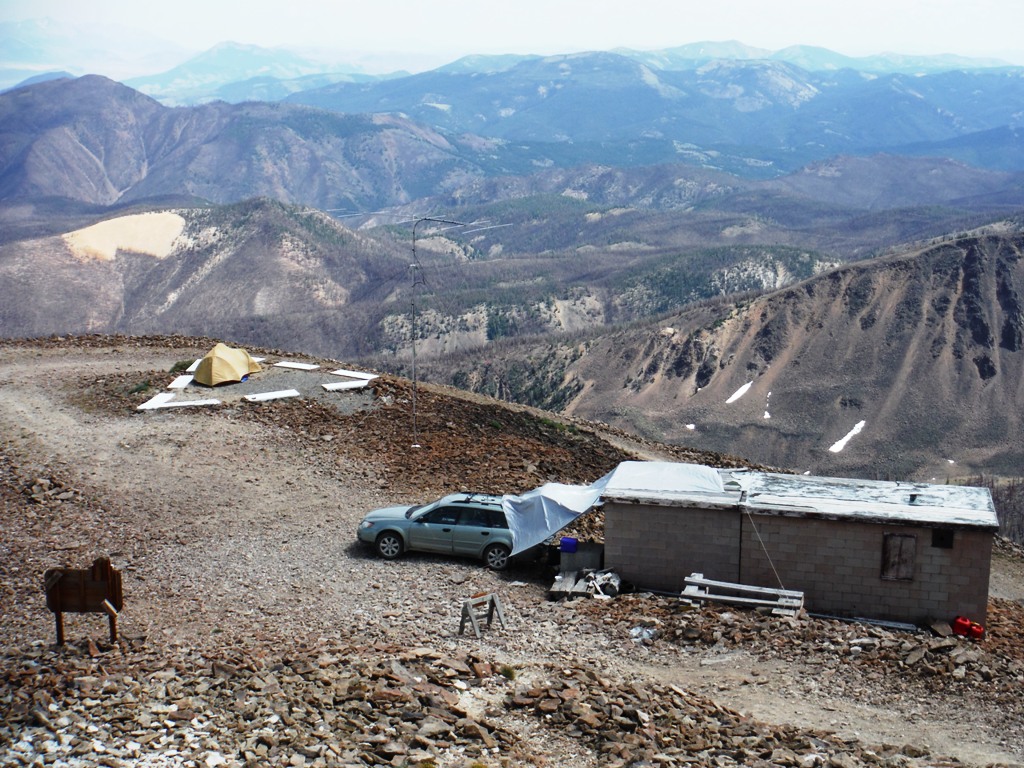
Operating site was at the
end of the road, just southeast of the
actual Lookout
|
|
SETUP & EQUIPMENT
The
antenna set up took a bit longer than
anticipated, because of the uneven ground, and
the necessity to have the side guys positioned
properly so as to stay tight while the mast is
raised off the prop. But finally the guy
anchors (2' long pieces of rebar pinned under
the rocks) were positioned properly and the
guy lengths adjusted so that the mast would
raise smoothly. So, as shadows
lengthened, the antenna was mounted on the
mast and raised into position. Then the
equipment was all unpacked and
connected. Finally, it was time to
put up the tent!
The antenna installation Saturday, showing
the tent location on the only flat spot
The 6m station was essentially
be the same as that used on the past W7GJ 6m
EME DXpeditions, except that the antenna was
only an M2 6M5XHG yagi mounted on a homebrew
24' mast. Also,
for the first time, the transceiver was an
Elecraft KX3. The KX3 worked great on
the JT65A and FSK441 digital modes on 6m, and
also was very convenient, since we could
monitor for band openings without turning on
the generator! What a neat feature
to have a battery powered receiver in the
field!
To our great
surprise, there actually WAS intermittent
cell phone coverage intermittently from the
railing of the lookout, so we could
occasionally check the map on the ON4KST
REGION 2 CHAT page from time to time to see
what direction to be expecting some
propagation. As before, we just set up
on the tailgate of the car, using a tarp to
provide some shelter from the sun and
wind. Fortunately, we did not have any
rain during the trip or have any untoward
animal encounters (although we carried our
pepper spray with us all the time!).
|
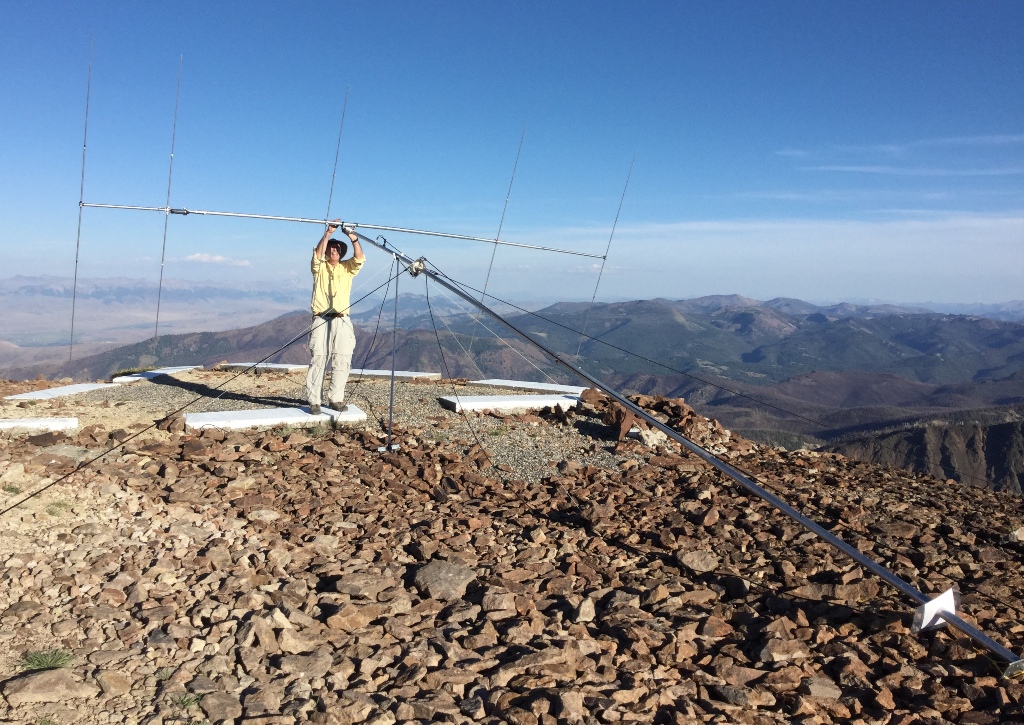 W7GJ mounting 6M5XHG on the end of the mast
resting on the prop
W7GJ mounting 6M5XHG on the end of the mast
resting on the prop
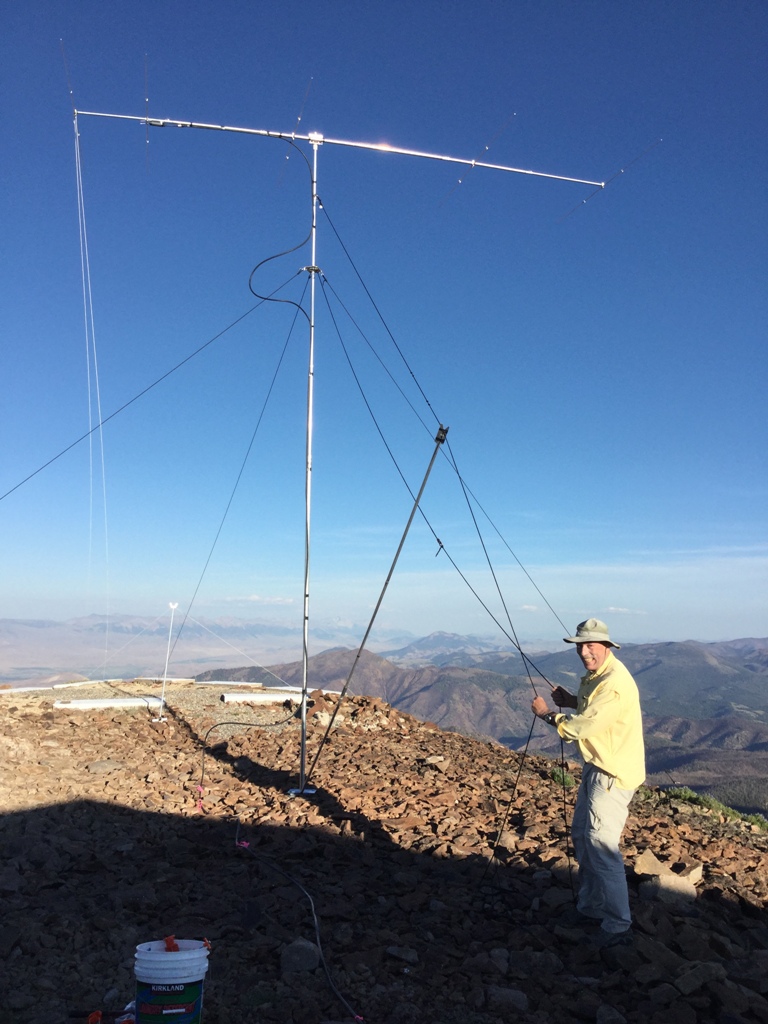
|
Finally getting the tent
set up on the helipad in the twilight Friday
night July 3!
QRV by moonrise Friday
night July 3!
|
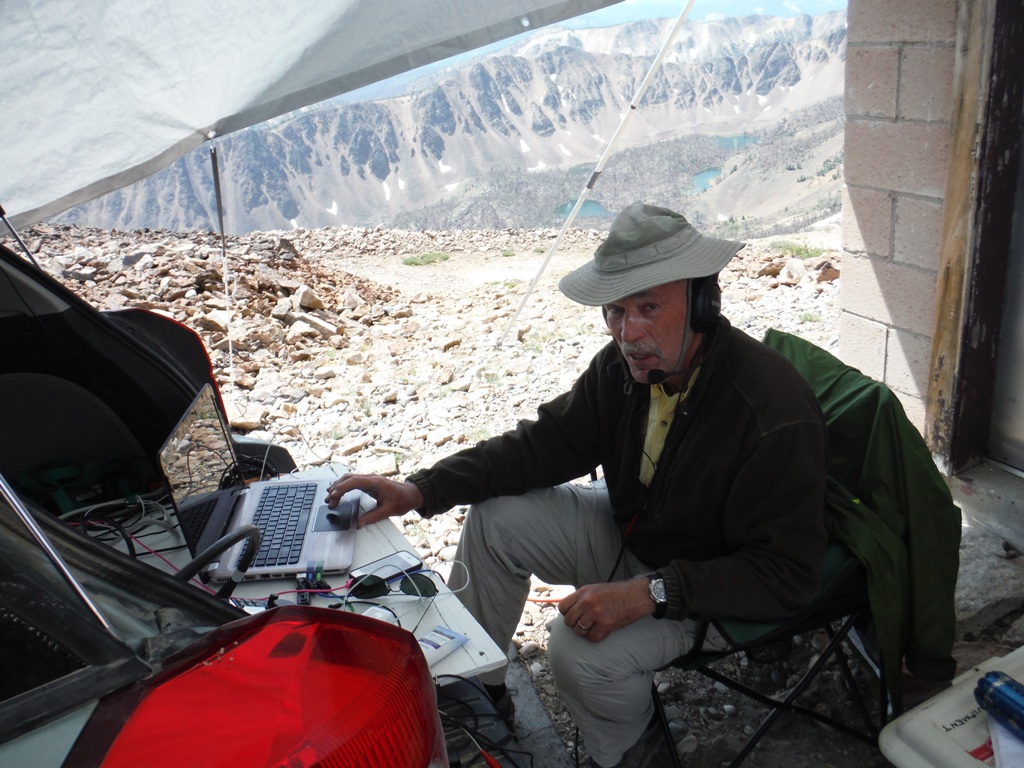
W7GJ operating 6m from
DN24so at 10,350'
|
OPERATING
It took 7 hourse to drive down
from Frenchtown, Montana on Friday July 3,
and we finished setting up just before
moonrise. I copied G8BCG and
SM7FJE calling when the moon reached an
elevation around 6.5 degrees elevation,
however the polarization was not reciprocal,
and we did not complete. Given
the very uneven terrain (which greatly
reduces the chances of additional ground
gain), I was very surprised to copy anything
from them.
I was QRV all day Saturday July 4, and had a
great double hop opening to the East Coast
until the Kp index caused aurora in the
early afternoon. I was able to
make a few aurora contacts in the Pacific
Northwest Saturday evening, but the 6m
band became pretty quiet as the
shadows lengthened.
Since we could
see rain coming down west of us, and were
worried about dismantling everything in the
rain on Sunday morning, we tore down the
station and packed up everything Saturday
night and watched the fireworks over Challis
as we climbed in the tent. We basically had
one full day of operation from the top
We heard no
stations on 6m from the mobile Sunday morning
until we reached the valley on the way
home, but continued making some contacts
with 100w and a vertical from the
car.
|
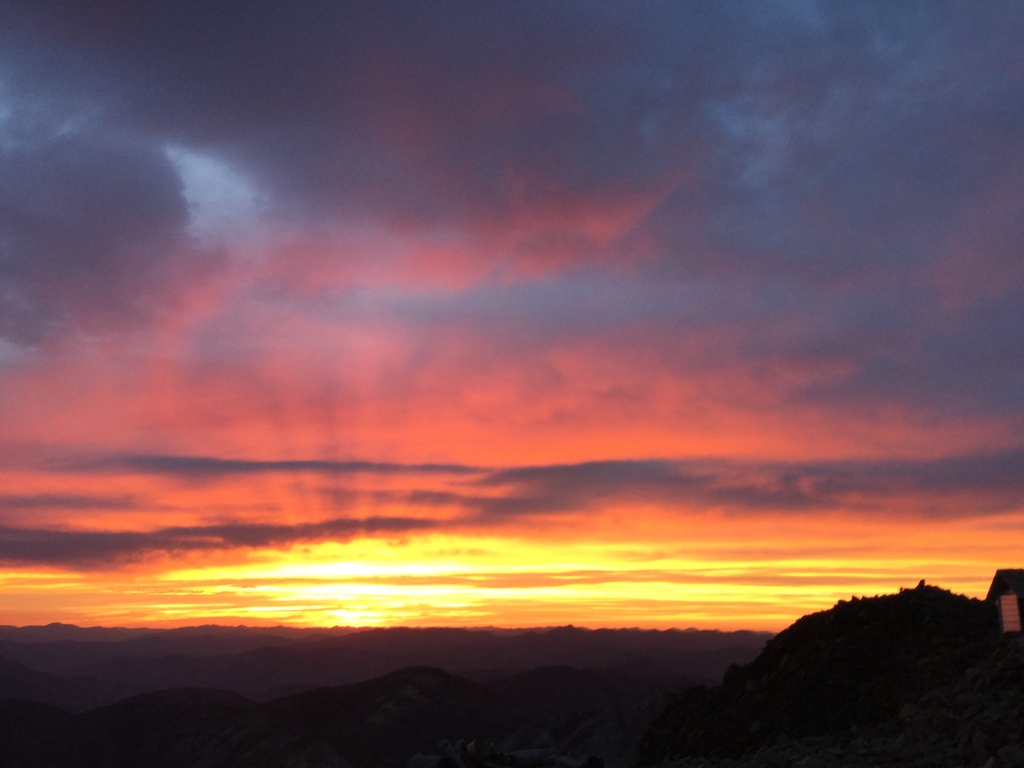
Sunset over the Sawtooth
Mountains as we tore down on Saturday July 4,
2015
|
|
6M
QSL INFORMATION
Please QSL direct with SASE
direct to:
Lance Collister, W7GJ
P.O.Box 73
Frenchtown, MT 59834-0073
USA |
SUMMARY OF RESULTS
I worked 153
stations in the computer log, and 23 more on
FSK441 up there. Then 6 more stations
from the car while mobile as I was leaving,
so 182 total from DN24, 2 more from DN34,
and 5 from DN35. I didn't have
prop from DN25 or DN26 on the way
home. So including all the
mobile contacts, I ended up with 189
contacts for the DXpedition. I was
quite happy with that, since there were a
number of stations worked who specifically
requested DN24, and also a number of double
hop contacts were made with East Coast
stations who seldom have a chance to work
such rare grids out here in the Rocky
Mountains. Good DX to all and 73!
|
|